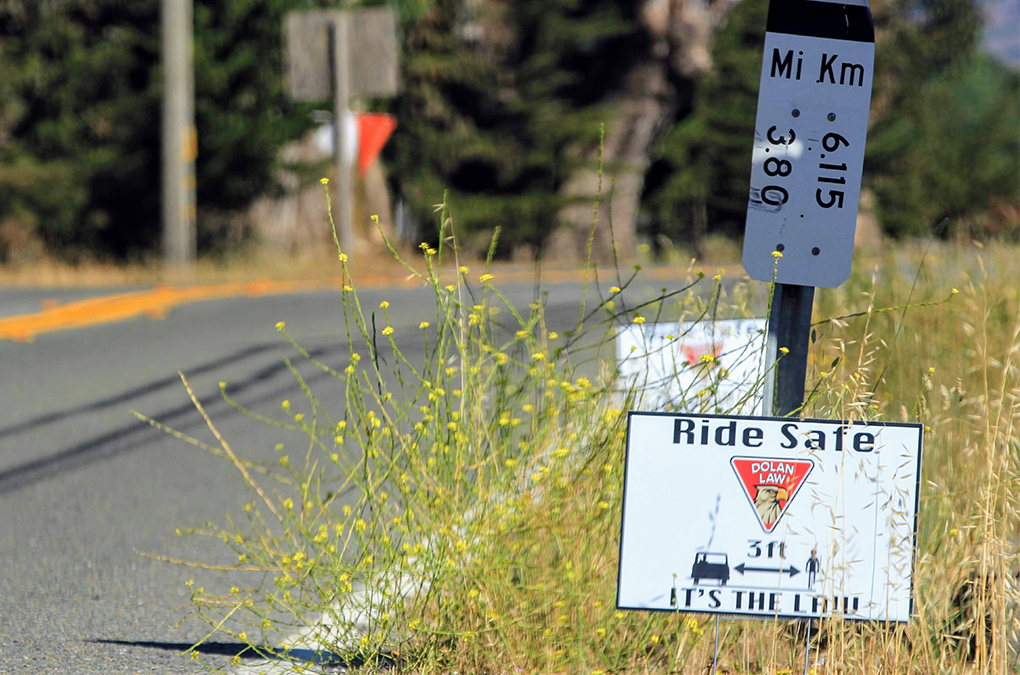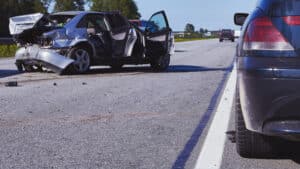Written by: Christopher Dolan and Taylor French
Drivers and bicyclists must coexist in an environment that, at times, can feel too crowded for both.
California has enacted several laws throughout the years in an effort to ensure the safety of those sharing the roads, but none is more important than the Three Feet for Safety Act. In 2013, California’s legislature passed the act, codified as California Vehicle Code section 21760, requiring drivers to give bicyclists a minimum of three feet between the motor vehicle and bicycle when passing in the same direction on a highway. This law became operative on Sept. 16, 2014.
Prior to the act, the California Department of Motor Vehicles had already provided that maintaining three feet between cars and bicycles was the best practice, but the act gave law enforcement the ability to stop a motorist and issue an infraction for failing to keep this distance. An infraction issued for a violation of California Vehicle Code section 21760 results in a minimum fine of $35. If a collision occurs between a car and bicycle causing great bodily injury to the bicyclist, the driver of the car will be issued a $220 fine. In addition to these fines, however, the motorist will also likely incur court fees and/or other administrative fees, which could significantly increase the cost of a violation.
While the act is as straightforward as it sounds — a car may not pass a bicycle traveling in the same direction unless it provides, at a minimum, three feet between the car and the bicycle — there is another important caveat. Subsection D of California Vehicle Code section 21760 states:
(d) “If a driver is unable to pass with three feet of distance due to traffic or roadway conditions, the driver shall slow to a speed that is reasonable and prudent, and may pass only when doing so would not endanger the safety of the operator of the bicycle, taking into account the size and speed of the motor vehicle and bicycle, traffic conditions, weather, visibility, and surface and width of the highway.”
The language of subsection D appears to give some discretion to officers stopping motorists for passing too closely and to drivers when deciding whether to pass a bicyclist. Ultimately, this language also gives judges discretion in issuing fines, should a driver contest the violation.
In addition to an infraction, a violation of California Vehicle Code section 21760 may carry additional ramifications that drivers may not anticipate. For example, if a driver hits and injures a bicyclist in violation of California Vehicle Code section 21760, the driver can be found to be, “negligent per se,” in a civil lawsuit.
Negligence per se is a legal doctrine establishing a presumption of negligence for a violation of a statute, ordinance or regulation. If a defendant in a civil lawsuit is found to have violated a statute, the violation caused the type of harm the statute was designed to protect, and the plaintiff is of the class of people the statute was designed to protect, then the defendant is considered negligent per se. In other words, as a matter of law and as applicable here, a defendant driver who violated California Vehicle Code section 21760 — thereby causing bodily injuries to a bicyclist — could be considered negligent and liable for those injuries and the resulting damages.
So, what can drivers do to ensure they are maintaining at least three feet from bicyclists and to avoid a violation of California Vehicle Code section 21760? Most importantly, if in doubt, drivers should assume they are too close to a bicyclist. Remember, the act provides the minimum distance from a bicyclist that a driver must maintain, but there are certainly situations where three feet is simply not enough space.
Drivers should consider the amount of time it takes to bring a car to a complete stop to avoid hitting a bicyclist. When passing, drivers should consider changing lanes rather than attempting to sneak past bicyclists. And remember, drivers can only pass a bicyclist when it is safe to do so, and risking a bicyclist’s life to save a few extra minutes during one’s commute is never a risk worth taking.
Finally, what can bicyclists do to ensure a safe distance around them? Bicyclists should always make sure they are visible and should never assume a driver will maintain a three-foot minimum distance.
While the act puts the burden on the driver to maintain the three-foot buffer, bicyclists should always make sure to monitor the distance and avoid careless, distracted or inexperienced drivers. Bicyclists can even wear a “Three Feet” bike jersey to remind drivers of the distance requirement. It just may save a life and get the bicyclist some compliments in the process!










